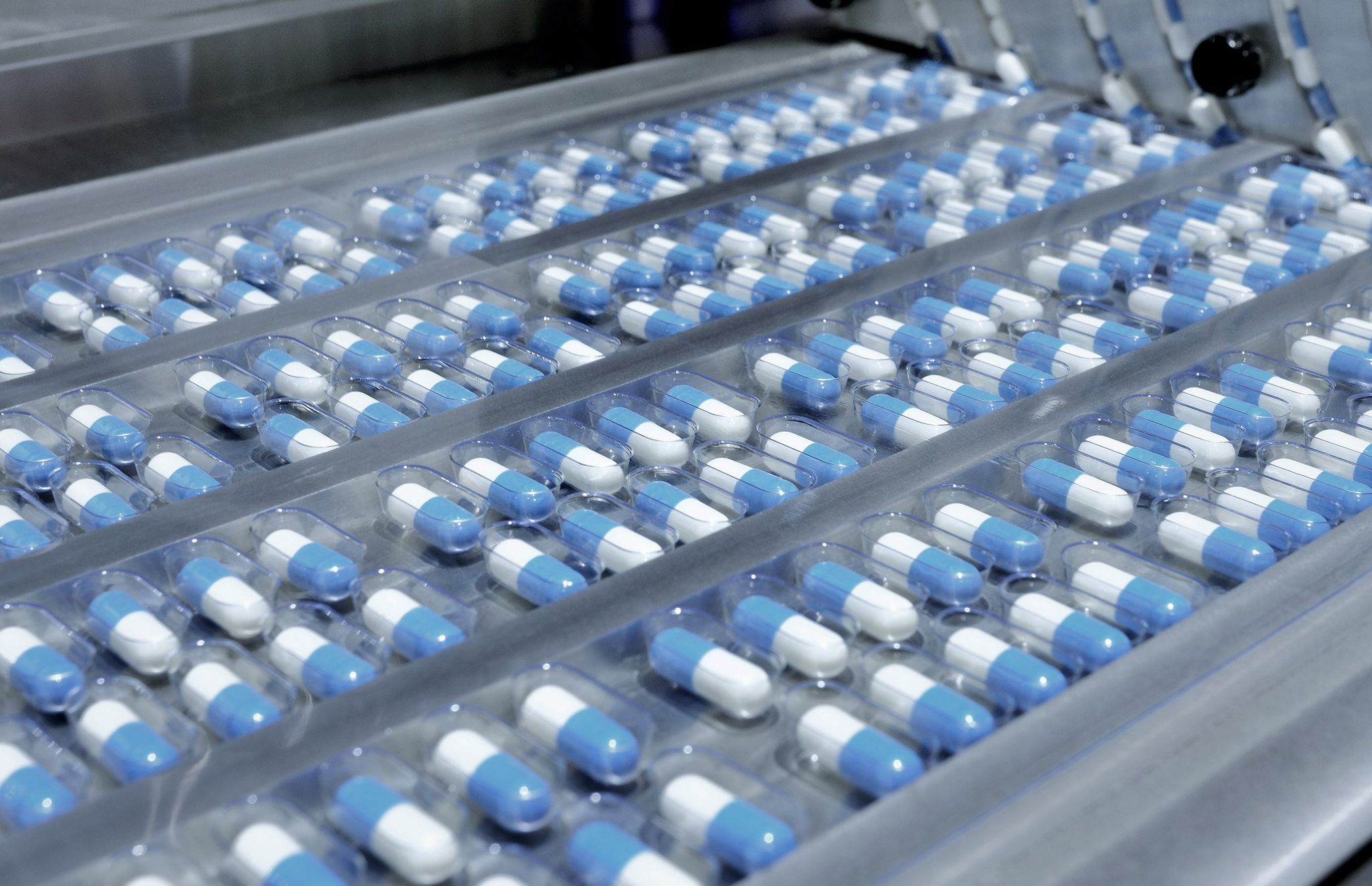
The Inflation Reduction Act of 2022 (the Act)1 includes prescription drug provisions that have significant implications for the pharmaceutical industry and Medicare beneficiaries, such as allowing the U.S. Department of Health and Human Services (HHS) to negotiate prices for certain high-cost Medicare covered drugs (including small molecule drugs and biologics) and to implement the negotiated prices starting in 2026 (starting initially with 10 Part D drugs and ramping up over time to 20 Part D or Part B drugs), inflation rebates for Part D and Part B drugs, Medicare Part D redesign and a new manufacturer discount program aimed at lowering the out-of-pocket (OOP) costs for beneficiaries, and add-on Medicare Part B payments for biosimilar products.
While many champion the Act as a major step toward reducing healthcare costs in America, it is not without criticism. A statement released by the Pharmaceutical Research and Manufacturers of America (PhRMA), a trade group representing leading companies in the industry, expressed concerns that the Act "will lead to fewer new treatments and doesn't do nearly enough to address the real affordability problems facing patients at the pharmacy."2 Some pundits have expressed concerns that the Act may shift research dollars away from small molecule drugs or cause the industry to launch with higher initial drug prices. Given the incentives provided for biosimilars, some predict that biologics manufacturers may shift their patent and launch strategies to allow a biosimilar to come to the market sooner in order to avoid price negotiations with HHS.
Below we describe some of the key prescription drug provisions of the Act. Exactly how the Act will be implemented will be subject to rulemaking, implementing regulations, and issuing of guidance documents by HHS and the Centers for Medicare & Medicaid Services (CMS). It will be important for stakeholders to prepare and submit timely comments to proposed rules on regulations implementing the Act.
Drug Price Negotiation for Certain High-Priced Single Source Medicare Drugs
The Act authorizes HHS to negotiate drug prices for certain high-priced single source branded drugs covered under Medicare Part D (retail prescription drugs) or Part B (administered by physicians). The negotiated prices will not apply until 2026. For the first two years, only Part D drugs will be impacted.
Below is the timeline for how HHS will select drugs for drug price negotiation.
| Initial Price Applicability Year | Total Negotiation-Eligible Drugs |
| 2026 | 10 Part D drugs |
| 2027 | 15 Part D drugs |
| 2028 | 15 Parts D or B drugs |
| 2029 or later | 20 Parts D or B drugs |
General Process: Negotiation-eligible drugs will be selected from 50 Part B and 50 Part D drugs having the highest total expenditures during the most recent 12-month period prior to the selected drug publication date. Drugs selected for negotiation will be subject to a maximum fair price (MFP). Eligible drugs for selection are restricted to small molecule drugs that have been approved by the U.S. Food and Drug Administration (FDA) for at least seven years with no generic on the market and biologics that have been licensed for at least 11 years with no biosimilar on the market. In determining whether there is a generic or biosimilar on the market, an authorized generic would not count and would be treated as the same qualifying single source drug.
HHS will select and publish the list of selected drugs subject to price negotiation at least two years prior to the initial price applicability year.3 The negotiation period begins on the sooner of: 1) the date on which the manufacturer and HHS enter into an agreement with respect to the MFP, or 2) February 28 following the selected drug publication date. During the negotiation period, the manufacturer will be required to submit certain information to HHS, including information on the non-federal average manufacturer price. The negotiation period will end on November 1 of the year that begins two years prior to the initial price applicability year. Beginning in 2028, HHS can select drugs for renegotiation. An agreement of MFP with HHS will remain effective until the drug is no longer considered a selected drug, or until a generic or a biosimilar comes on the market.
When negotiating the MFP, HHS will consider certain manufacturer-specific data, including 1) research and development costs, 2) costs of production and distribution of the selected drug, 3) prior federal financing support, 4) data on pending and approved patent applications and FDA approvals and exclusivities, and 5) market data, revenue, and sales volume, as well as evidence about alternative treatments.
Exceptions: There are notable exceptions to the "negotiation-eligible drug" definition, including:
- certain "small biotech drugs" for initial price applicability years 2026, 2027, and 2028 that meet the low Medicare expenditures criteria (including drugs with 1 percent or less total expenditures under Part D or B);
- drugs with less than seven years (for small molecular drugs) or less than 11 years (for biologics) from their respective FDA approval or licensure date with respect to the initial price applicability year;
- orphan designated drugs for which the only approved indication(s) are for the orphan designated disease or condition;
- drugs with a generic or biosimilar competitor;
- certain low-spend Medicare drugs with less than $200 million in total Medicare expenditures within the applicable 12-month period with respect to the initial price applicability year, subject to increase based on the consumer price index; and
- biological products derived from human whole blood or plasma.
Special Rule to Delay Selection and Negotiation for Biosimilar Entry: The Act provides a special rule for single source biologic manufacturers to delay selection and negotiation for up to two years if there is a "high likelihood" that a biosimilar product will be licensed and marketed within that period based on "clear and convincing evidence" provided by the manufacturer. Exactly what constitutes "clear and convincing evidence" is not defined and will require further guidance and implementing regulations.
Penalties and Excise Tax for Noncompliance: Any manufacturer of a selected drug that has entered into an MFP agreement with HHS must offer the MFP to providers furnishing the drugs under Part B or pharmacies dispensing the drug under Part D. Failure to offer the MFP is subject to a civil monetary penalty of up to 10 times the difference between the price charged and the MFP for all units of the drug product furnished, dispensed, or administered during the applicable year. Violations of certain terms of the MFP agreement are subject to a civil monetary penalty equal of $1 million for each day of violation. Any manufacturer that knowingly provides false information will be subject to a civil monetary penalty equal to $100 million for each item of such false information.
Manufacturers of selected drugs that do not negotiate with HHS are subject to an excise tax on sales of the drug during the noncompliance period, starting at 65 percent, increasing by 10 percent every quarter up to 95 percent. The excise tax would be suspended if manufacturers choose to have their drugs not covered by Medicare or Medicaid.
Inflation Rebates for All Medicare Part B and Part D Drugs (with Limited Exceptions)
Starting in 2023, the Act requires manufacturers to pay a mandatory quarterly rebate if drug prices increase faster than inflation for certain Medicare Parts D and B drugs. Price changes are based on the Average Sales Price (ASP) for Part B drugs or the Average Manufacturer Price (AMP) for Part D drug. In general, the rebate amount is calculated based on the total number of units furnished in the rebate quarter multiplied by the amount that exceeded the inflation-adjusted benchmark.
Part B rebate applies to all single source drugs and biologics, including biosimilar products, covered under Medicare Part B, with limited exceptions, such as certain vaccines and drugs covered under Part B with an annual average total allowed charges of less than $100 per individual.
Similarly, except for Part D drugs with an annual average total cost per individual of $100 or less, all Part D covered drugs approved under a new drug application (NDA) or an abbreviated new drug application (ANDA) where there is no brand equivalent being sold, are subject to Part D rebates if the AMP increases faster than inflation.
Failure to comply with the drug rebate requirements for a calendar quarter will be subject to civil monetary penalties of at least 125 percent of the rebate amount specified for such quarter.
Continued Delay of Implementation of the Prescription Drug Rebate Rule Until 2032
The Act delays the implementation and enforcement of the provisions of the final rule that would eliminate the Anti-Kickback Statute safe harbor protection for prescription drug rebates paid by manufacturers to Part D plans and their pharmacy benefit managers until January 1, 2032. This rule was published by the Office of Inspector General of HHS in November 2020, titled, "Fraud and Abuse; Removal of Safe Harbor Protection for Rebates Involving Prescription Pharmaceuticals and Creation of New Safe Harbor Protection for Certain Point-of-Sale Reductions in Price on Prescription Pharmaceuticals and Certain Pharmacy Benefit Manager Service Fees" (85 Fed. Reg. 76666).
Medicare Part D Redesign to Lower OOP Costs for Beneficiaries
Beginning in 2024, the Act limits the beneficiary OOP costs to an amount equal to the catastrophic threshold.4 Beginning in 2025, a $2,000 annual cap will be imposed on the OOP costs, subject to annual adjustment thereafter based on per capita expenditure spending for covered Part D drugs. Effective in 2025, the current Coverage Gap Discount Program will be replaced by a new manufacturer discount program, through which drug manufacturers will provide 10 percent discount off the negotiated price for applicable Part D branded drugs after the deductible is satisfied through the catastrophic phase of the benefit and 20 percent discount off the negotiated price in the catastrophic phase.
Other changes include allowing Part D beneficiaries to make prescription payments in monthly installments up to the annual OOP threshold, limiting the annual Part D premium increases to 6 percent, and expanding eligibility for the full low-income cost-sharing subsidy to include individuals at or below 150 percent of the federal poverty level.
Cost-Sharing for Covered Insulin Products Limited to $35/Month
Beginning in 2023, copayments for insulin products covered under Medicare Part D (or Part B for insulin furnished through durable medical equipment) will be limited to $35 per month. For plan year 2026 and later, such copayments will be the lesser of: (i) $35, (ii) 25 percent of the MFP if the covered insulin product is selected for negotiation by HHS; or (iii) 25 percent of the negotiated price of the covered insulin product under prescription drug plan or Part D plan.
Temporary Medicare Part B Add-On Payments for Biosimilar Products
To incentivize biosimilar development, the Act provides for an 8 percent Medicare Part B add-on payment (calculated based on the ASP for the branded reference biologic product) for qualifying biosimilar products for a five-year period. For biosimilars for which payment was made as of September 30, 2022, the five-year period begins on October 1, 2022. For biosimilars for which payment is first made between October 1, 2022, and December 31, 2027, the five-year period begins on the first day of such calendar quarter during which such payment is first made.
Eliminates Cost-Sharing for Adult Vaccines Under Part D
To improve access to adult vaccines, beginning on January 1, 2023, the Act eliminates co-sharing or deductibles for adult vaccines covered under Medicare Part D and improves access to adult vaccines under Medicaid and the Children's Health Insurance Program.
For More Information
For questions regarding this alert and FDA and healthcare regulatory strategies for drugs, biologics, and other FDA-regulated products, please contact any member of Wilson Sonsini's FDA regulatory, healthcare, and consumer products practice. For questions regarding patent strategies, please contact any member of Wilson Sonsini's patents and innovations practice.
[1] The White House, Briefing Room, By the Numbers: The Inflation Reduction Act (August 15, 2022), available at https://www.whitehouse.gov/briefing-room/statements-releases/2022/08/15/by-the-numbers-the-inflation-reduction-act/.
[2] PhRMA, Press Release, PhRMA Statement on the Inflation Reduction Act Becoming Law (August 16, 2022), available at https://www.phrma.org/resource-center/Topics/Access-to-Medicines/PhRMA-Statement-on-the-Inflation-Reduction-Act-Becoming-Law.
[3] For the initial negotiated price applicability year of 2026, HHS will publish the list of Part D drugs selected for negotiation by September 1, 2023, followed by a negotiation period between October 1, 2023, and August 1, 2024. The final negotiated MFPs for implementation in 2026 will be published by September 1, 2024.
[4] Catastrophic coverage refers to the point when one’s total prescription drug costs for a calendar year have reached a set maximum level, which means the beneficiary pays a significantly lower copayment or coinsurance for covered drugs for the remainder of the year. For 2022, the catastrophic threshold is $7,050 in out-of-pocket costs for covered drugs.
Contributors
- Privacy Policy
- Terms of Use
- Accessibility



